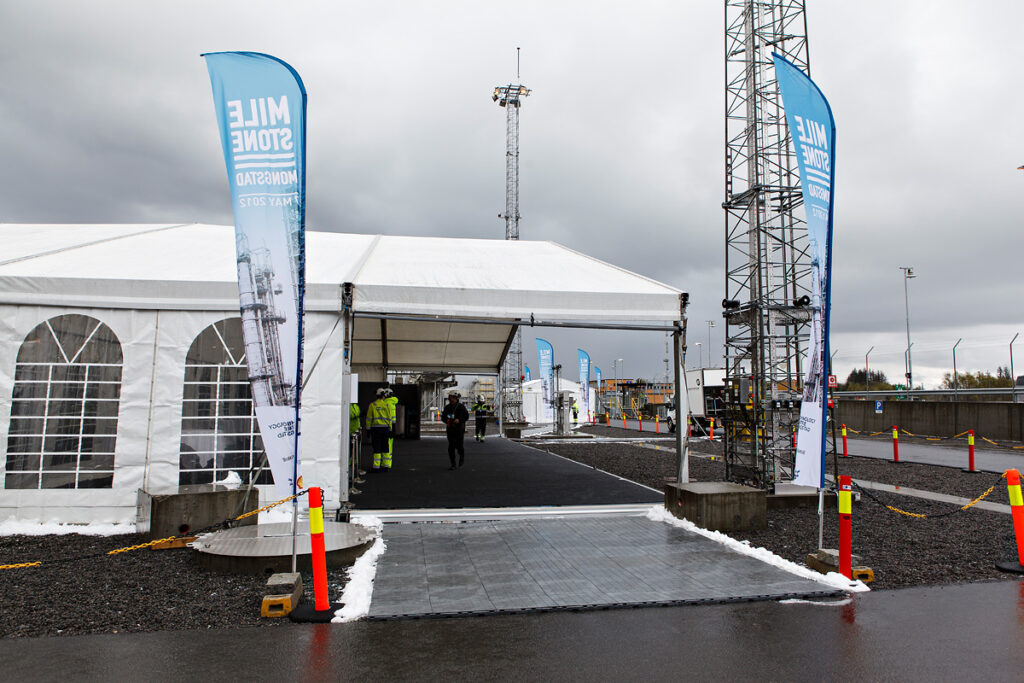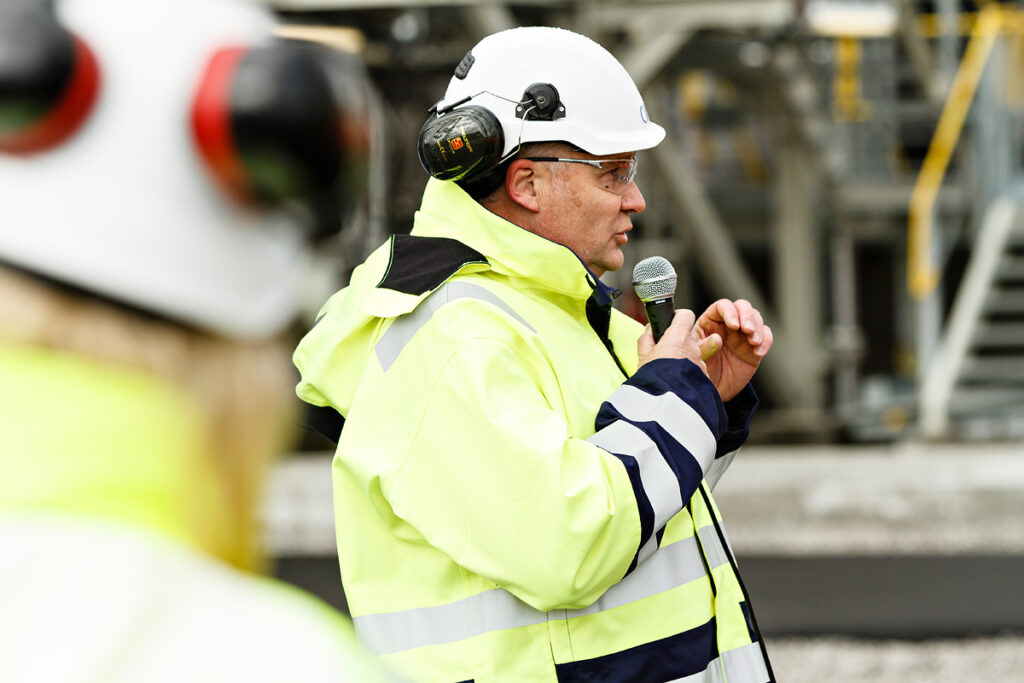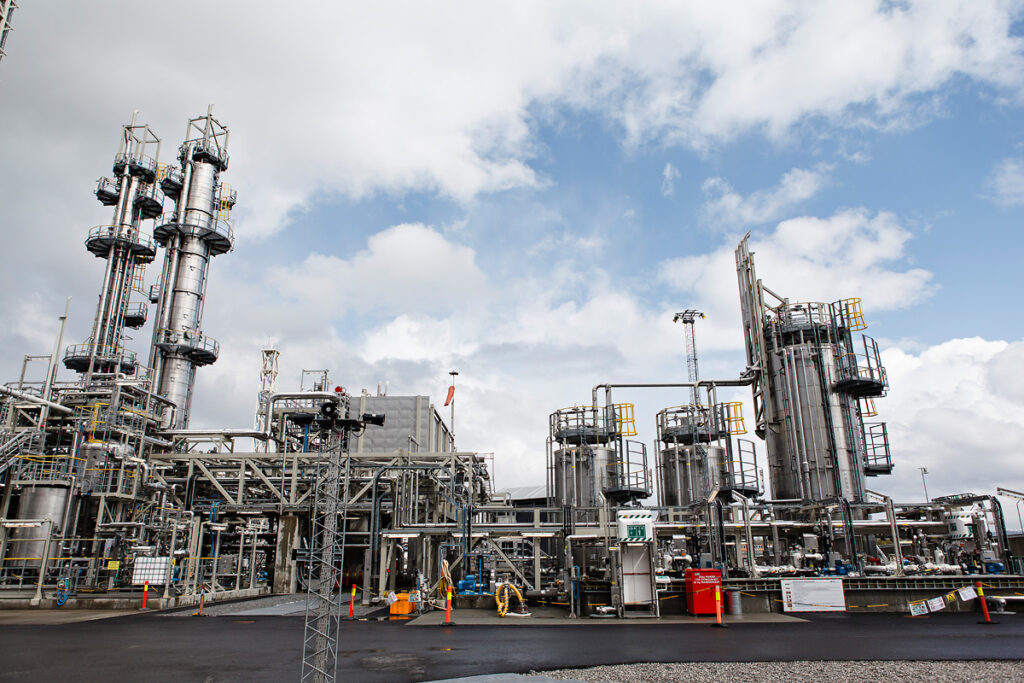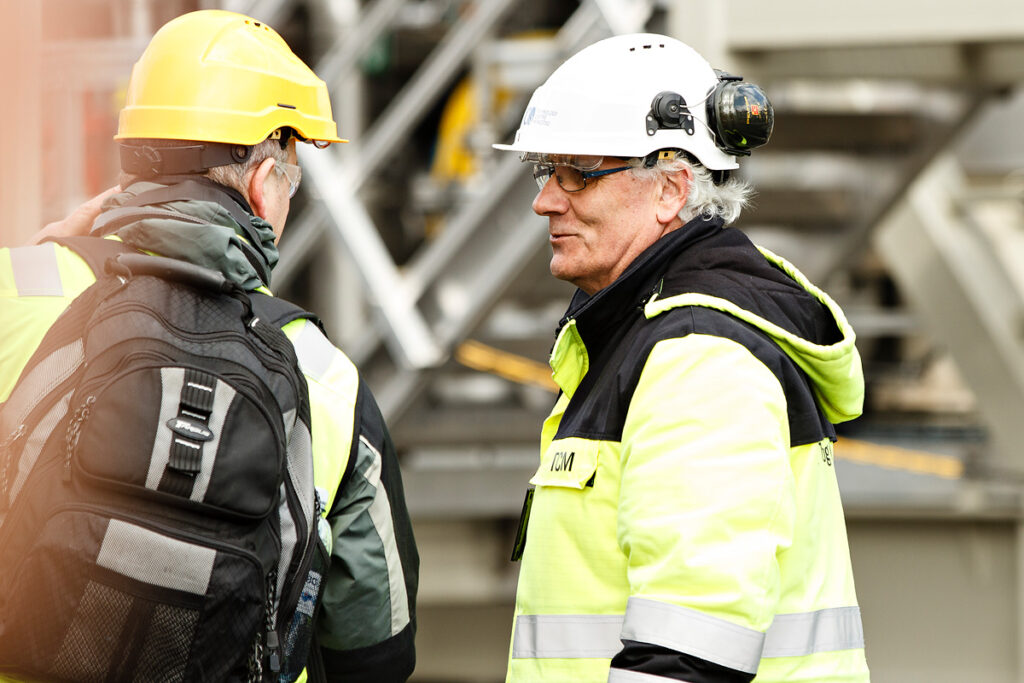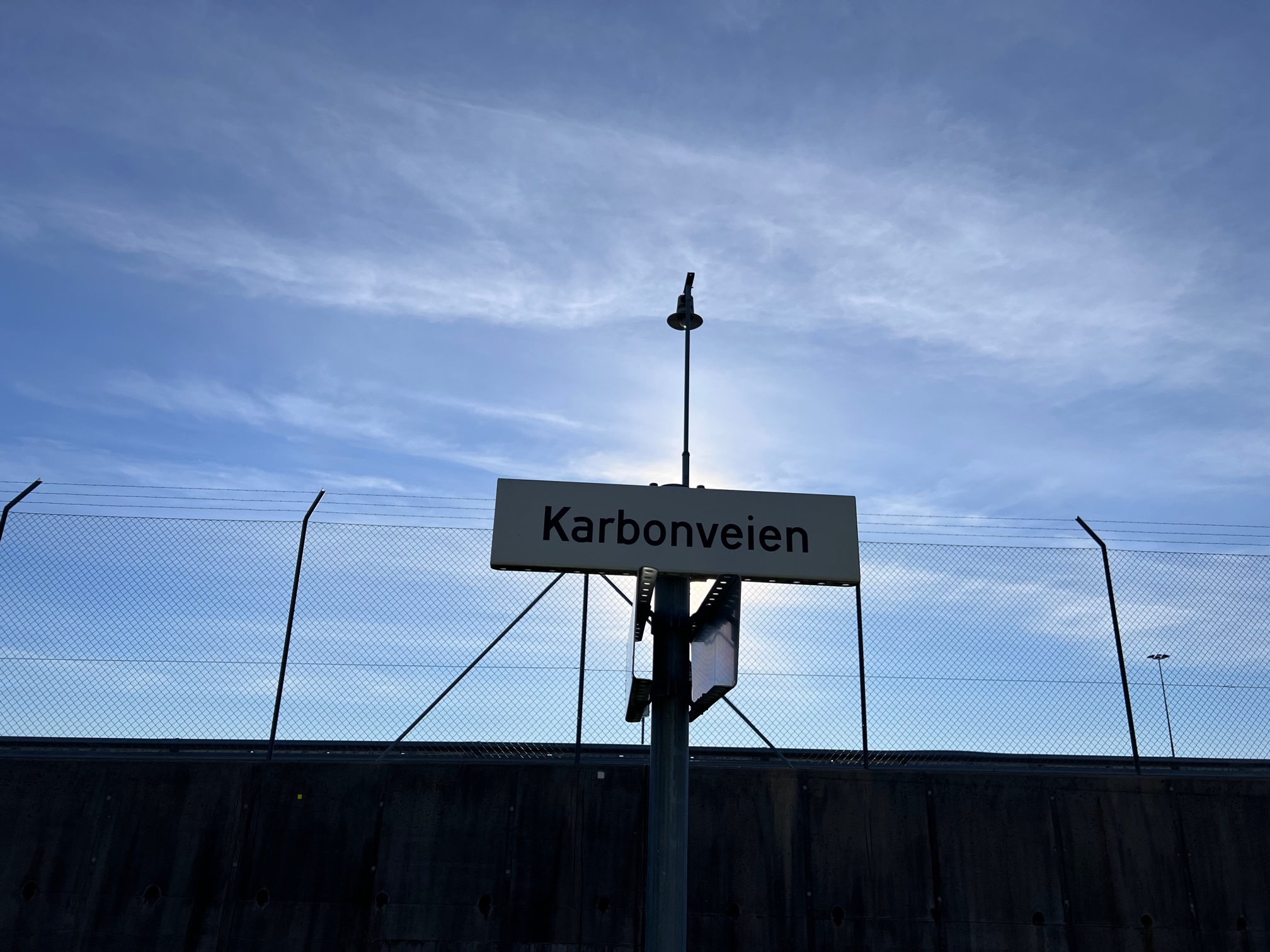
02.05.2022
Looking back on 10 successful years
– The development of technologies for capturing CO2 would definitely not have reached as far as we have come without the test facilities and expertise of TCM. The company’s future is determined by what the technology suppliers and the industry in general will demand from services.
This is what Svein Ingar Semb, Chairman of the Company Meeting (Board) in Technology Centre Mongstad DA (TCM), says. Gassnova is the Norwegian state’s company for CCS, and has an ownership share of 73.9 percent in TCM. The industrial partners, Equinor, Shell and TotalEnerigies, each own 8.7 percent. The collaboration is based on a partnership agreement that is valid until the end of 2023.
– The Government’s and Gassnova’s starting point is that when several full-scale facilities for capturing CO2 gradually come into operation, the competence of TCM will be relevant both for problem solving along the way, and for testing that can make the capture processes even more efficient. We also register great interest in testing completely new technologies on TCM’s Site for Emerging Technologies. In other words, technological development does not stop.
Has given unique results
Through the establishment of TCM, the state took significant financial responsibility for facilitating testing and verification of capture technologies, as part of an overall strategy to achieve the climate goals nationally and globally.
– The utility value for our own country we now see, not least through the realization of the Longship project. Aker was responsible for the construction of the amine plant at TCM. They then tested the technology that was later chosen for capturing CO2 at Heidelberg Materials’s cement factory in Brevik. In this way, they verified that the technology is safe and will work in a full-scale capture facility. The same applies to a number of internationally renowned technology suppliers who are now in the market with their solutions.
– We can also measure utility value through the scientific work TCM has contributed to the CCS industry, in collaboration with institutions such as SINTEF and a number of universities at home and abroad. This is documented in close to 50 articles published in reputable journals shared on many platforms, which has given the industry a large supply of knowledge. By sharing the results of the TCM open test campaigns, the industry has also received a useful benchmark for the development and improvement of its proprietary technologies. This knowledge also simplifies the work and reduces the costs for project owners for future capture facilities.

Svein Ingar Semb chairs the Company Meeting (Board) of TCM in the anniversary year. (Photo: Gassnova).
Dedicated employees are the most important factor in our success
Svein Ingar Semb emphasizes that the good results after ten years of operation have by no means been a matter of course. – One thing is to finance and build the world’s largest and most flexible facility for testing capture technologies. However, success is first and foremost a result of human ability and willingness to innovate, solve problems, and to create progress and results. I am impressed with the focus and efforts of the team at TCM.
Fellowship with the industry has been crucial
According to Semb, the collaboration with the industrial partners has been absolutely crucial for TCM. – Equinor took an operational responsibility for TCM from the very beginning, and their personnel have done an outstanding job. Like Equinor, Shell has been involved all the way, and both have added important knowledge to the environment. This also applied to South African Sasol, which was a co-owner until 2017, and TotalEnergies, which has since replaced them. I would say that the ownership community has been and is the «engine» in TCM and works very well.
Has opened doors internationally
– That the industrial owners have also received a lot in return by taking responsibility for the operation and development of TCM, has been the intention, Semb maintains. – They are all investing significantly to take part in the green transition.
Svein Ingar Semb believes that the ownership community with heavy industrial players has also been of great importance for the reception and interest TCM has been met with internationally, and first and foremost in the USA. The collaboration result from a bilateral MoU (Memorandum of Understanding) from 2009 between the US and Norwegian authorities on energy research, where CCS is highlighted as an area for joint efforts.
– TCM has thus been a catalyst, where technology suppliers and research-based institutions, with financial support from the Department of Energy, have come to test and verify technologies. This has been very fruitful for both parties. In June, a large delegation from the United States will come to TCM to summarize experiences. We are registering great American interest in testing at the Site for Emerging Technologies, where both TDA Research and Membrane Technology Research (MTR) have already conducted successful campaigns.
Looking forward to the continuation
– When we look back on TCM’s history on this anniversary, we should be proud that TCM has shown its legitimacy as the world’s largest and most flexible test facility, with competent employees who both take care of the operation of the facility and engage in knowledge sharing of the highest class. I am proud of what we have achieved and look forward to following the CCS development in the time to come, Svein Ingar Semb concludes.
Test campaigns at TCM 2012 – 2022
2013 – 2014: Aker Clean Carbon (Norway)
Aker Clean Carbon, now Aker Carbon Capture, was the supplier of the amine plant at TCM, and performed testing of its capture technology. The implementation of this test resulted in valuable experience for later test campaigns at TCM. Aker Carbon Capture is the supplier of the technology chosen for capture in the planned full-scale project at Heidelberg Materials’s cement factory in Brevik.
2013 – 2014: Alstom (France)
With technical assistance from TCM, Alstom carried out the first and so far only test to date at the ammonia plant, with CO2 capture based on the Chilled Ammonia Process (CAP) technology. Baker Hughes and TCM are considering reopening the ammonia unit and conducting tests.
2014: The owners of TCM and Aker Clean Carbon
The first open access, research-based test campaign at TCM on the amine plant with the carbon capture liquid MEA (Mono Ethanol Amine), initiated and financed by the owner companies in collaboration with Aker Clean Carbon.
2014 – 2015 and 2016: Cansolv Technologies Inc (Canada)
Cansolv conducted two separate campaigns to test their technology in the amine plant. The aim was to verify the technology for use in a CO2 captureproject in the UK. Cansolv, in collaboration with Shell, has further developed this technology. The capture technology was chosen for Fortum Varme’s planned full-scale project at Klemetsrud in Oslo.
2015: The owners of TCM
Based on results from the first open test with the carbon capture liquid MEA in 2014, a new test was carried out which gave significantly improved results in terms of capture rate and energy consumption in the amine process.
2015 – 2016: Carbon Clean Solutions (UK / India)
Carbon Clean Solutions carried out tests of its capture technology at the amine plant as part of the preparations for the company and partners to start full-scale capture and storage related to chemical processing in Chennai, India.
2016 – 2017: ION Engineering (US)
With support from The US Department of Energy (DoE), ION Engineering (now ION Clean Energy) conducted a test campaign at the amine plant of the company’s proprietary carbon capture solvent. Based on the results, ION has further developed its technology.
2017: The owners of TCM
The third research based MEA test was conducted in 2017. Among the research topics was reduction of contaminant levels in the treated gas leaving the process. In the tests with this carbon capture liquid at TCM, it has been possible to capture up to 98 % of CO2 with aqueous MEA (a mixture of water and MEA).
2017: TCM, SINTEF, NTNU and Cybernetica (Norway)
With support from the Norwegian state through CLIMIT, the partners jointly carried out experiments on the amine unit and in laboratories, with the aim to improve efficiency and operational stability of the process. This, and other open test campaigns at TCM, have given new insight into important advancements in generic capture technology.
2017 – 2018: The owners of TCM and SINTEF
With support from the Norwegian state through the CLIMIT-project Aerosolve, a test was carried out to identify aerosol-based mechanisms to reduce emissions when processing post combustion industrial flue gases e.g from refineries and cement plants in connection with CO2 capture, and to take countermeasures to verify that the performance is within the environmental limits given in the emission permit. The knowledge of how to develop and operate CO2 capture facilities within given emission permits was strengthened.
2019: Fluor Corporation (US)
With support from The US Department of Energy (DoE), Fluor conducted a test campaign with their proprietary carbon capture technology.
2019-2020: ALIGN-CCUS
ALIGN-CCUS (Accelerating Low Carbon Industrial Growth through Carbon Capture Utilisation and Storage) was a project financed through the first ERA-NET Co-fund ACT program, funded by nine European countries and the European Union Horizon 2020 program. TCM was one of the test sites that demonstrated the use of the non-proprietary capture liquid CESAR1 on large scale with real industrial flue gas.
2020: The owners of TCM
The owners of TCM jointly carried out a test with the research-based capture liquid CESAR 1 aiming at capturing CO2 at the lowest possible cost. The test was initiated by the IEA, which through its «Greenhouse Gas R&D Program» has requested a comprehensive assessment of new technologies for capturing CO2 in the energy sector. In the final phase, tests were performed for SSE Thermal (UK and Ireland) and Imperial College London on dispatchable operation of carbon capture facilities.
2021: Mitsubishi Heavy Industries Engineering (Japan)
Mitsubishi Heavy Industries Engineering (MHI) tested its technology at the amine plant during the summer 2021. This included high CO2 capture rate testing and qualification of MHI’s latest solvent on both flue gas types available at TCM.
2021 – 2022: TDA Research (US)
As the first user of TCM’s new Site for Emerging Technologies, TDA Research conducted experiments with a hybrid technology utilizing both a membrane-based and a sorbent-based capture step. This test campaign, funded by the US Department of Energy, aimed to demonstrate TDA’s technology on real flue gas with a view to applying their modular design to applications such as carbon capture from coal power generation.
2021 – 2022: Membrane Technology and Research (US)
Membrane Technology and Research (MTR)has used the Site for Emerging Technologies to conduct experiments with membranes. MTR’s tests of their multi-stage membrane system using their Polaris Gen 2 membranes were funded by the US Department of Energy and allowed MTR to test the performance of their system, including a low pressure-drop membrane module design, on real flue gas.
2022: Research Foundation RTI International (US)
The research foundation RTI International conducts a test of a new non-aqueous solvent at the amine plant. The US Department of Energy (DoE) covers amine plant modification and test costs. The modifications include the installation of an intercooler system on the TCM absorber to improve the energy performance of the capture system.

